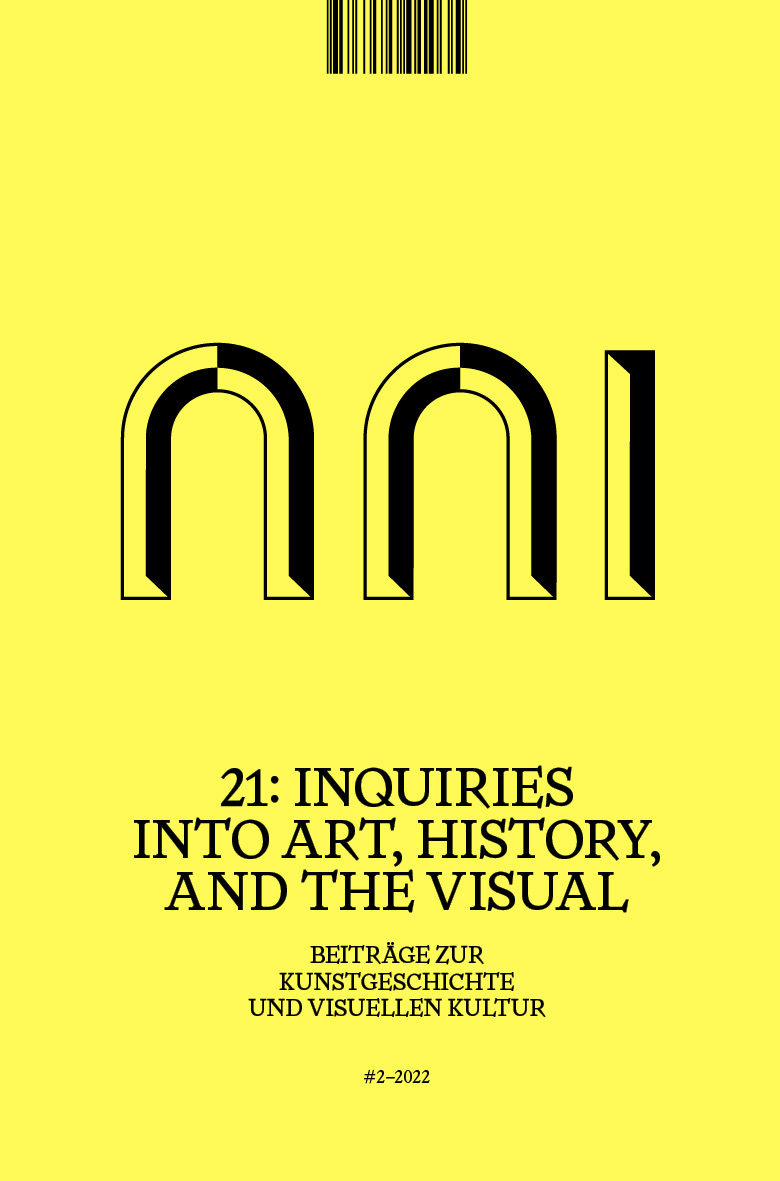
Issue #2 – 2022
Ethische Wertschöpfung. Moralische Kriterien in der zeitgenössischen Kunst und Kritik
(hg. von Magdalena Nieslony)
Editorial
-
Ethische Wertschöpfung. Moralische Kriterien in der zeitgenössischen Kunst und Kritik
Articles
-
Moral des Blicks oder Ethiken des Sehens?
The present paper explores the complex and contradictory relationship between art, morals and vision from a transhistorical and transdisciplinary perspective. It also investigates the difference between a so-called ethics of seeing and a moral(ization) of the gaze. As will be shown, the attempt to make a nuanced distinction between ethics and morals, but also between different degrees of (in-)visibility and participation in the realm of the visible, is particularly useful when reflecting on the possibilities and limits of depicting violence and pain. Last but not least, the present contribution questions and problematizes the deceptive logic of any ‘direct’ political aesthetics that often absorbs the subversive and thus critical potential of art.
-
Moralische oder ethische Wende des gegenwärtigen Kunstdiskurses? Bemerkungen zur Geschichte und Gegenwart moralischen Urteilens über zeitgenössische Kunst
This article sketches the outline of an ethical or moral turn within contemporary art and art criticism that has been emerging since the 1990s and was diagnosed in the early 2000s by theorists such as Jacques Rancière and Claire Bishop. In doing so, it argues for a different, broader understanding of the ethical turn while discussing the argumentative problems that are currently emerging within it. Finally, by distinguishing between moral and ethical modes of judgment, it argues for a differentiated practice of ethical judgment in the field of art production and reception.
-
Ethics, the Future of Aesthetics? “Tate Neighbours”, Natalie Bell
and Tania Bruguera’s 10,148,451, 2018–19In attending to the specific repercussions entailed by the presence and practice of Cuban artist Tania Bruguera, particularly in her exhibition/project 10,148,451 (2018–2019), this essay attempts to describe some elements of the aesthetic, discursive, and material conditions that contribute to the implementation (and contradictory deployments) of notions such as ethics, care, and social work in the curatorial programmes and institutional identity of Tate Modern. Bruguera’s position as an artist whose practice is characterized by constant negotiations of the interests of institutions, audiences, citizens, art world denizens, and other stakeholders becomes a subject of particular relevance at a stage of contemporary art history in which concepts such as autonomy and authorship are dwindling, while methodologies and morphologies of interdependency, mutual aid, and an ethics of care increasingly gain momentum.
-
Vom Schlafsack bis zur Schwimmweste.
Die Bedeutung der Moral in Kunst und DesignThis essay examines the mechanisms of the construction of moral meaning on the basis of objects in the field of tension between art and design, whereby the objects in question are morally motivated, insofar as their authors want to contribute, with them, towards improving the living conditions of disadvantaged social groups. The first part discusses Lucy Orta’s Refuge Wear and Bas Timmer’s Sheltersuits, which in their respective designs take into account the needs of homeless people. The second part looks at works on the theme of migration by Hussein Chalayan, Ai Weiwei and Bansky. In choosing these themes and objectives, the artists and designers comply with the moral norm of social responsibility that is currently relevant in art and design. The study will show that an object itself is never moral, and that only the actions performed with the object can be judged in moral terms.
-
Ethik statt Moral? Nachdenken über Handlungsräume der Kunst am Beispiel von Sklav*innenmonumenten
In 2015, the Ark of Return monument, designed by Rodney Leon, was inaugurated in front of the UN headquarters in New York City. Almost 400 years earlier, the monument to the Grand Duke of Tuscany, Ferdinando I de’ Medici, was erected in Livorno. It coincided with the climax of the slave trade in the Mediterranean. The two monuments will be considered as a “constellation” which touches the opposite ends of a specific thread of (violent) history. Both monuments exemplify a larger corpus of (archi)sculptural works whose visibility nowadays is sensitized to the presence of black slave imagery in European urban spaces and its intertwining with the transatlantic slave trade. The concluding section seeks a possible theory of empathy that allows for the inclusion of historical positions on the ethical and sympathetic dimension of sculpture in urban public spaces.
Debate
-
Freie Rede
-
Die Freiheit der Kunst zwischen Cancel Culture
und Cultural Appropriation
Reviews
-
Roland Betancourt, Byzantine Intersectionality. Sexuality, Gender, and Race in the Middle Ages, Princeton 2020
-
Elizabeth Rodini, Gentile Bellini's Portrait of Sultan Mehmed II. Lives and Afterlives of an Iconic Image, London 2020
-
Aaron M. Hyman, Rubens in Repeat. The Logic of the Copy in Colonial Latin America, Los Angeles 2021
-
Diana Seave Greenwald, Painting by Numbers. Data-Driven Histories of Nineteenth-Century Art, Princeton 2021

